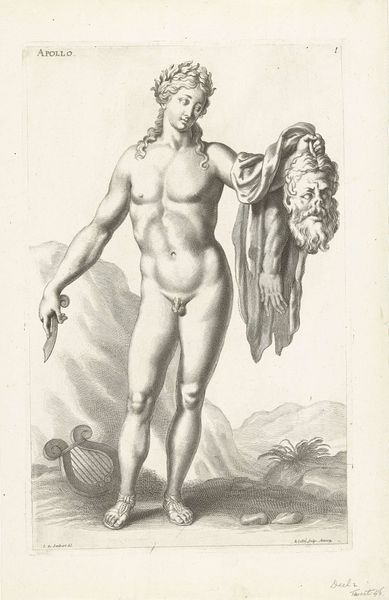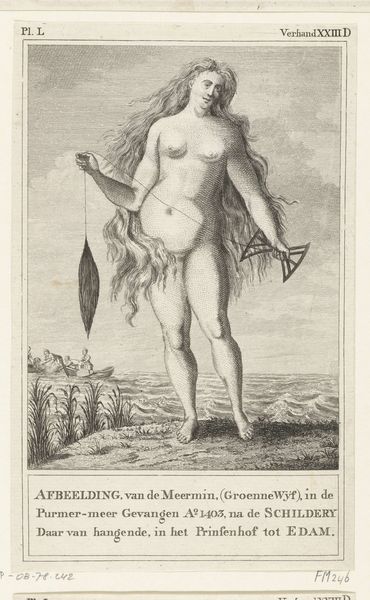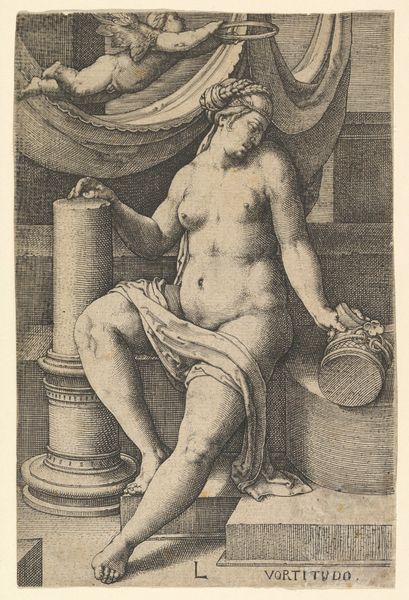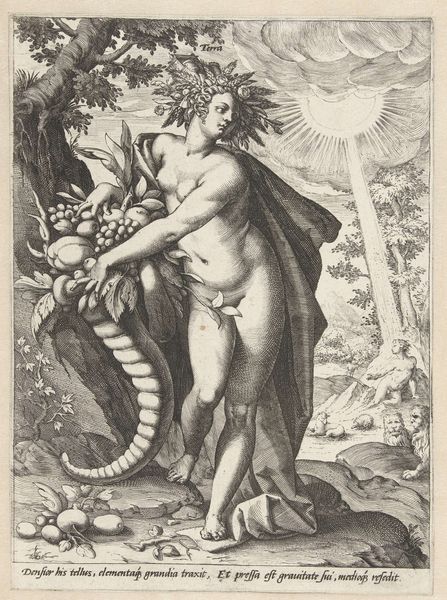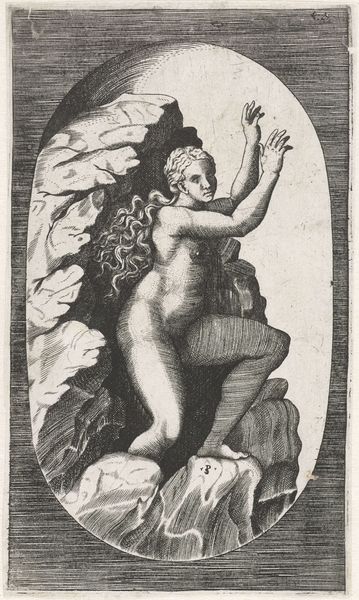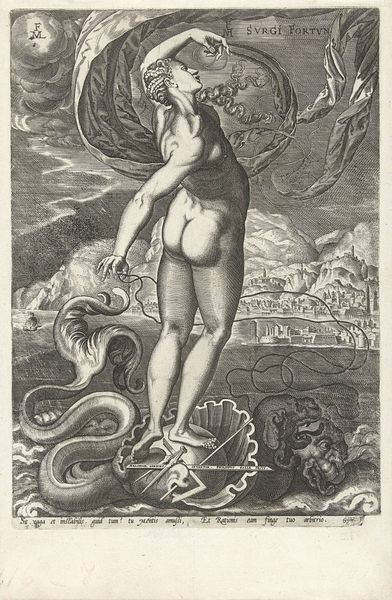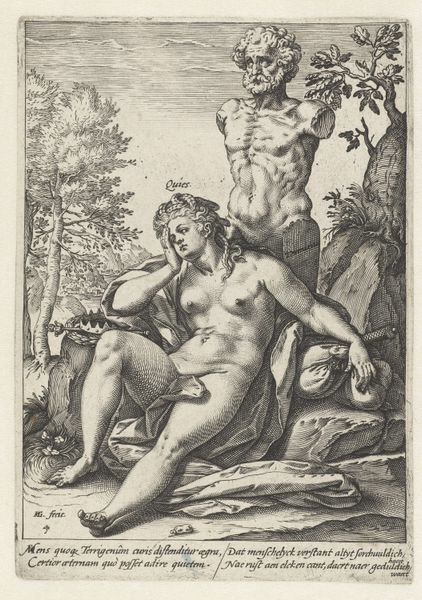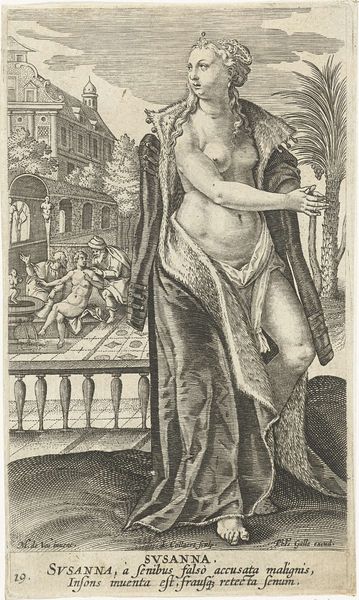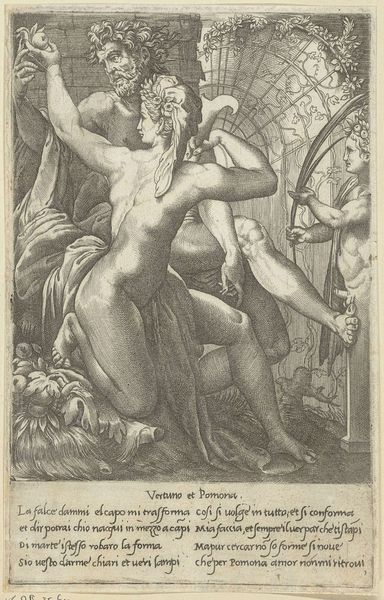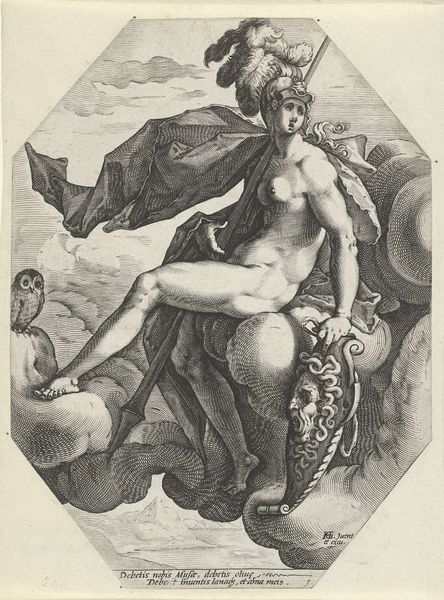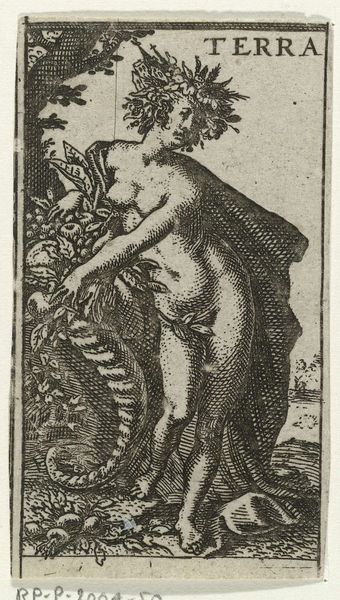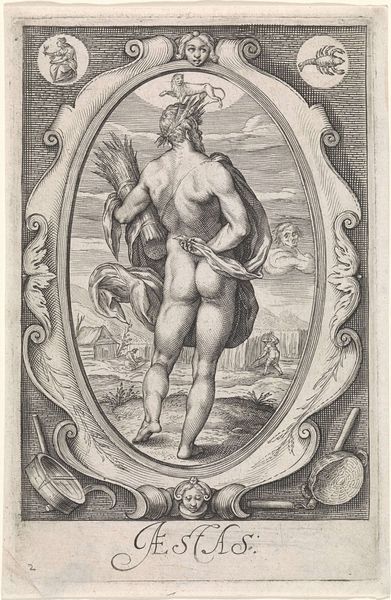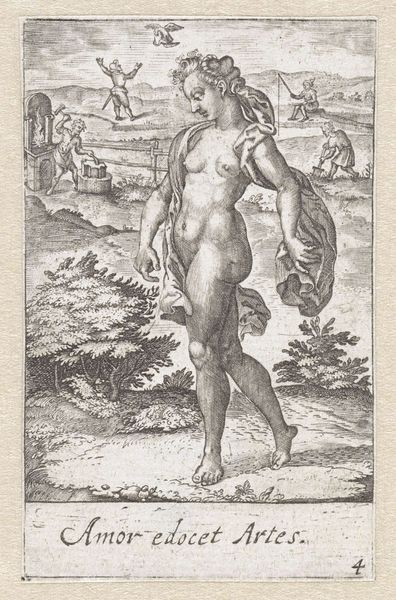
print, engraving
#
allegory
# print
#
old engraving style
#
landscape
#
mannerism
#
figuration
#
form
#
geometric
#
line
#
history-painting
#
nude
#
engraving
#
realism
Dimensions: height 214 mm, width 155 mm
Copyright: Rijks Museum: Open Domain
Curator: Hendrick Goltzius created this engraving, titled "Water," in 1586. It’s currently held at the Rijksmuseum. Editor: My first impression is of stark contrast. The bold lines of the engraving create a dramatic effect, especially around the central figure and the cascading water. Curator: It’s an allegorical piece, aligning with the Mannerist style. The central female figure represents the element of water. Consider how that representation intersects with dominant notions of femininity in the late 16th century. What narratives are being reinforced, or challenged, through her depiction? Editor: Absolutely. She is linked to the flowing vessel, an abundant water source. But, it's fascinating how the vessel and her posture echo each other; the form recalls ancient amphorae and the connection between female figures and containers of life, but amplified by the classical allusion. Curator: And we can analyze the broader composition. The positioning of the figure within the landscape, her dominance of the frame – what commentary is being made about the relationship between humanity, specifically femininity, and the natural world? Also consider Goltzius's skilled use of line to create a sense of depth and volume, particularly in rendering her musculature. Editor: That contrast is quite deliberate. Note the symbolic placement of the setting sun above the water and its subtle illumination upon a dove – likely a Holy Spirit symbol. Even the small figures drawing water reflect a cultural memory of mythological characters or biblical scenes, emphasizing continuity across the ages. Curator: It raises questions of accessibility, doesn’t it? Is this a celebration of a singular ideal or is this meant to empower wider female participation and visibility? I think a vital inquiry is the impact on audiences then versus its legacy now. Editor: Looking closely at the script at the bottom, those words themselves act as a sort of anchor tying the visual symbols to the deeper psychological concepts of abundance and earthly blessing. The image connects with subconscious meanings tied to the natural world. Curator: Looking at it through both lenses –the sociopolitical context and symbolic language, reveals its complexity and richness, but how fraught representation can be. Editor: Precisely. Reflecting on both of these, it shows how even simple images like "Water" hold the weight of centuries' worth of inherited meaning.
Comments
No comments
Be the first to comment and join the conversation on the ultimate creative platform.

